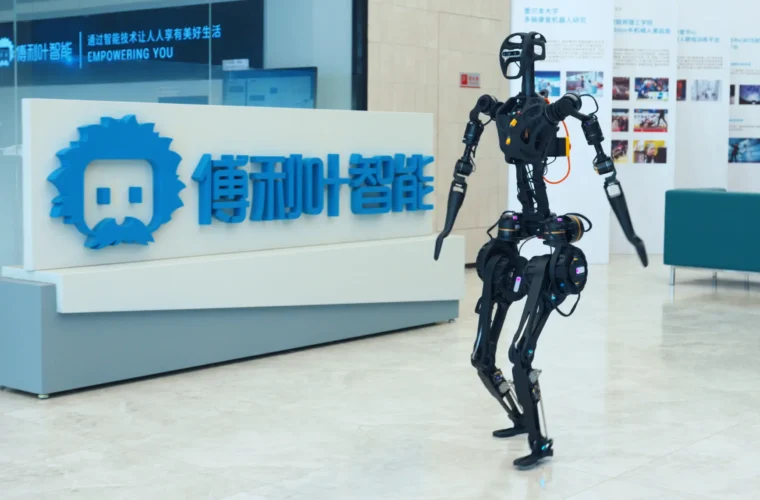Is Hydraulic Filament Artificial Muscles the Next Generation of Smart Textiles?
In a groundbreaking development, a team of researchers from UNSW Sydney’s Graduate School of Biomedical Engineering and Tyree iHealth has unveiled a remarkable innovation called hydraulic filament artificial muscle (HFAM). Led by Dr Thanh Nho Do, this breakthrough in soft robotics can potentially transform a range of industries, from healthcare to art.
The Birth of HFAM: Pioneering Soft Artificial Muscles
At the heart of this innovation lies a soft artificial muscle, a flexible, active, and controllable filament developed by the team. Dr Do explains, “We have developed a new type of soft artificial muscle called hydraulic filament artificial muscle (HFAM) for multiple robotic and medical applications.” This revolutionary artificial muscle allows for the creation of wearable assistive devices, smart garments, bio-inspired soft robots, flexible 3D bioprinters, soft grippers, and miniature surgical instruments.
To enable textiles that mimic the movements of robots, the team used HFAM as fibres and integrated them into traditional fabric-making techniques such as knitting and weaving. This integration enables textiles that are aesthetically pleasing, actively responsive, and controllable. Dr Do elaborates, “We used the HFAMs as fibers to produce smart textiles… Unlike conventional passive textiles, the HFAMs can be hydraulically controlled to generate motion and deformation.”
Scalability and Customization: Unlocking New Possibilities
The dimensions of HFAM are scalable, providing versatility in the design and construction of soft robotic systems. Dr Do assures, “The HFAM is scalable with a wide range of dimensions. Its length varies from several millimetres to meters.” This flexibility allows for creating structures of varying sizes, meeting the requirements of diverse applications. Furthermore, the team’s use of easily accessible components ensures that size constraints do not hinder future advancements.
The working principle of HFAM is rooted in its construction. Dr Do explains, “The HFAM is a thin, flexible filament constructed from a silicone tube inserted inside an extension helical coil spring.” When hydraulic pressure is applied, the HFAM extends due to the constraint of the coil spring on the silicone tube, storing elastic energy in the process. Controlled retraction of the pressure leads to contraction and the release of the stored energy. Precise control over hydraulic pressure allows for manipulating HFAM’s elongation and contraction, enabling intricate and dynamic movements.
Pushing the Boundaries in many industries
In a rapidly growing field of smart textiles, the team’s innovation stands out for several reasons. Dr Thanh Nho Do highlights their advanced properties: “Our smart textiles offer many advanced properties, including fast response, high programmability, and high versatility to form a wide range of shape-shifting structures.” These textiles, derived from small yet powerful hydraulic muscles, boast a thinner structure and stronger force than existing technologies, making them ideal for applications requiring functionality and form.
The lifting capacity of the team’s soft robots is awe-inspiring. Dr Do shares, “To give examples, our small HFAM… could lift a weight of 100 g, which is 357 times larger than its weight. Another HFAM with a diameter of 6.35 mm could lift 2 kg.” This remarkable strength-to-weight ratio showcases the enormous potential of HFAM-driven smart textiles to handle significant loads, making them suitable for various tasks that require lifting and manipulation capabilities.
The team’s smart textiles have already demonstrated a wide range of applications with immense potential for transforming industries. In the field of healthcare, they have created a portable smart compression device for enhancing blood circulation. Dr Do explains, “This smart compression garment can be wirelessly controlled by a compact driving source and smartphone app.” The team envisions a future where smart textiles are utilized in rehabilitation and physiotherapy, offering personalized and responsive support to individuals.
Beyond healthcare, the applications of smart textiles extend to fields such as art and exploration. Dr. Do highlights the potential for shape-morphing structures in decoration and fashion, opening avenues for creative and dynamic designs. Shape-shifting locomotion soft robots can be employed for exploration and rescue missions, adapting to various terrains and situations. Wearable gloves, deployable tents, and soft grippers are among the many other possibilities.
From Therapeutic Benefits to Empowering Human Potential
Smart textiles offer a significant advantage in the creation of compression garments. Dr Do explains, “Smart textiles are ideal materials to create compression garments due to their high conformability, breathability, and controllability.” Compression garments are constructed from these textiles and provide gentle yet effective therapeutic compression while maintaining a low profile and compact design. The ability to deliver targeted compression with soft contact to the body holds immense potential in promoting healing and improving comfort for individuals in need.
Dr Do shares his vision for the future of soft exoskeletons, emphasizing their growing demand in physiotherapy, rehabilitation, and human augmentation. He believes that advancements in soft robotics will lead to exoskeletons that are not only more user-friendly but also lighter, stronger, and more affordable. Soft exoskeletons will revolutionize the way we augment human capabilities, empowering individuals with enhanced mobility and strength. In the near future, it would improve our capacities.
Aiding Failing Hearts: Cardiac Assist and Total Artificial Hearts
The team’s ongoing work includes the development of a cardiac assist device utilizing HFAMs to support failing hearts. Dr Do explains their aim: “The device is designed to wrap around the heart surface to actively provide compression, helping the failing heart pump blood effectively.” Furthermore, the team is dedicated to creating a total artificial heart capable of replicating the intricate movements of a natural heart. These advancements hold the potential to revolutionize cardiac treatment and provide hope to individuals in need of life-saving interventions.
In addition to cardiac assist devices, the team is dedicated to advancing the development of total artificial hearts that can replicate the intricate movements of a natural heart. This groundbreaking endeavour holds immense potential for end-stage heart failure patients awaiting heart transplantation. Studies conducted by renowned cardiac research institutions, such as the Texas Heart Institute, have demonstrated the feasibility and success of total artificial hearts in prolonging and enhancing the lives of patients in dire need of a heart transplant.
The team’s commitment to revolutionizing cardiac treatment aligns with the growing demand for advanced solutions. According to data from the World Health Organization, cardiovascular diseases remain the leading cause of death globally, accounting for an estimated 17.9 million deaths each year. With the prevalence of heart failure on the rise, there is an urgent need for innovative interventions that can significantly improve patient outcomes and extend survival rates.
Led by the visionary Dr Thanh Nho Do, this team is driving the future of soft robotics. The remarkable properties of HFAM-driven smart textiles have the potential to revolutionize industries ranging from healthcare to art, unleashing new possibilities in robotics, rehabilitation, and beyond. Technology seamlessly integrates with the human experience, enabling us to envision a world where smart fabric remarkably enhances our lives.



